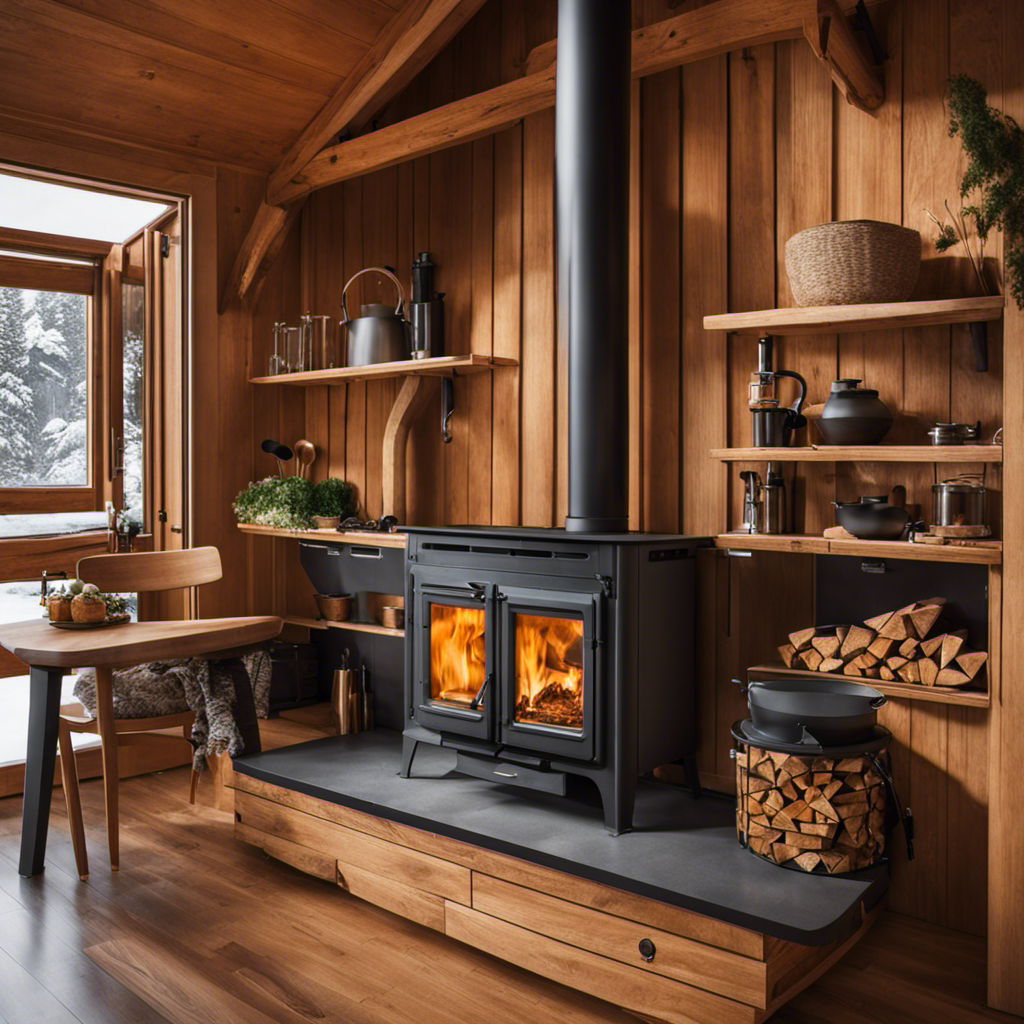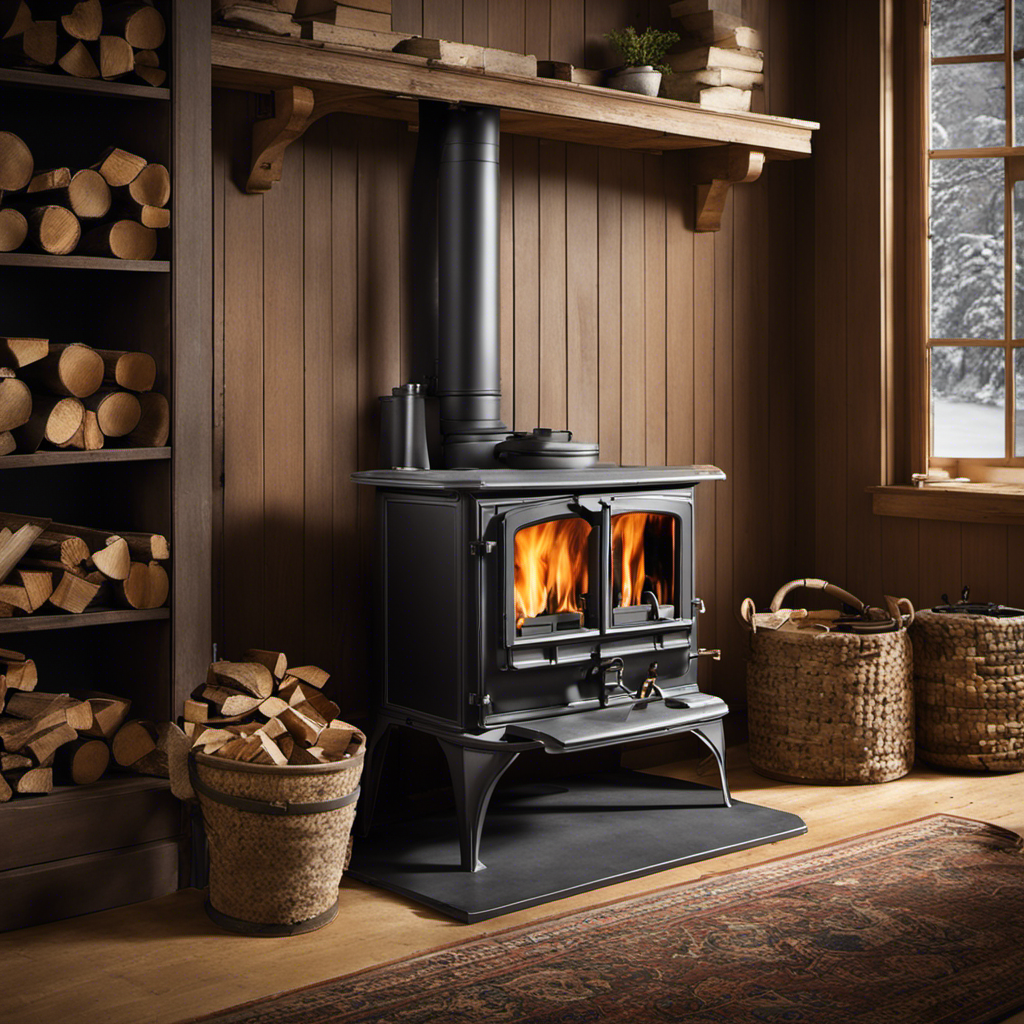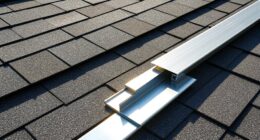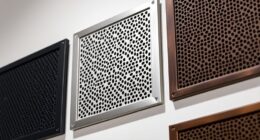- Chimney installation tips
- Venting options for wood stoves
Should you desire to imbue your home with the welcoming coziness and enduring charm of a wood stove, look no further. In this article, I’ll guide you through each step necessary to convert your fireplace into a haven for burning wood.
From choosing the right stove to testing its safe operation, I’ll provide you with all the knowledge and detail you need to make your dream a reality. Let’s get started!
Key Takeaways
- Measure the dimensions of the fireplace and chimney flue width
- Ensure compliance with local regulations for wood stove installation, clearance, venting, and emissions requirements
- Install a chimney and venting system that can handle the volume of smoke and gases
- Connect and secure the wood stove in the fireplace using fireproof materials and following local building codes and regulations
Choosing the Right Wood Stove for Your Fireplace
I think the first step in choosing the right wood stove for my fireplace is measuring the dimensions of the fireplace.
Wood stove efficiency is an important factor to consider when selecting a wood stove. It determines how well the stove can convert wood into heat. Look for stoves with high efficiency ratings, as they’ll provide more heat while using less wood.
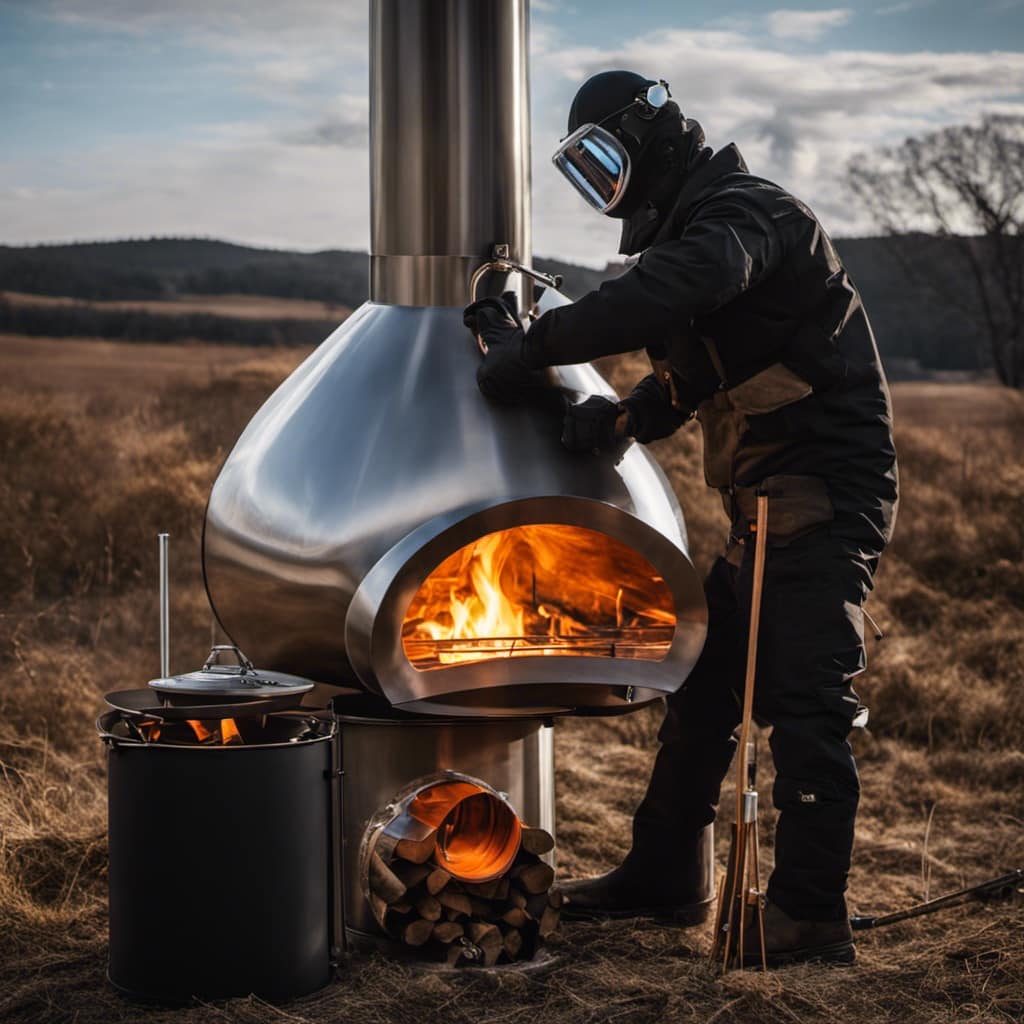
Another important consideration is wood stove regulations. Make sure to check the local regulations regarding wood stove installation, as they may have specific requirements for clearances, venting, and emissions. It’s crucial to comply with these regulations to ensure the safe and efficient operation of your wood stove.
Taking measurements and understanding wood stove efficiency and regulations will help you make an informed decision when selecting the right wood stove for your fireplace.
Preparing Your Fireplace for Wood Stove Installation
Before beginning the installation process, I need to ensure that my fireplace is properly prepared for the wood stove. This involves a few important steps to ensure the safety and efficiency of the installation. Here are the key preparations I need to make:
Preparing the hearth: I’ll start by thoroughly cleaning the hearth and removing any debris or ashes. This will provide a clean surface for the wood stove to sit on and prevent any potential fire hazards.
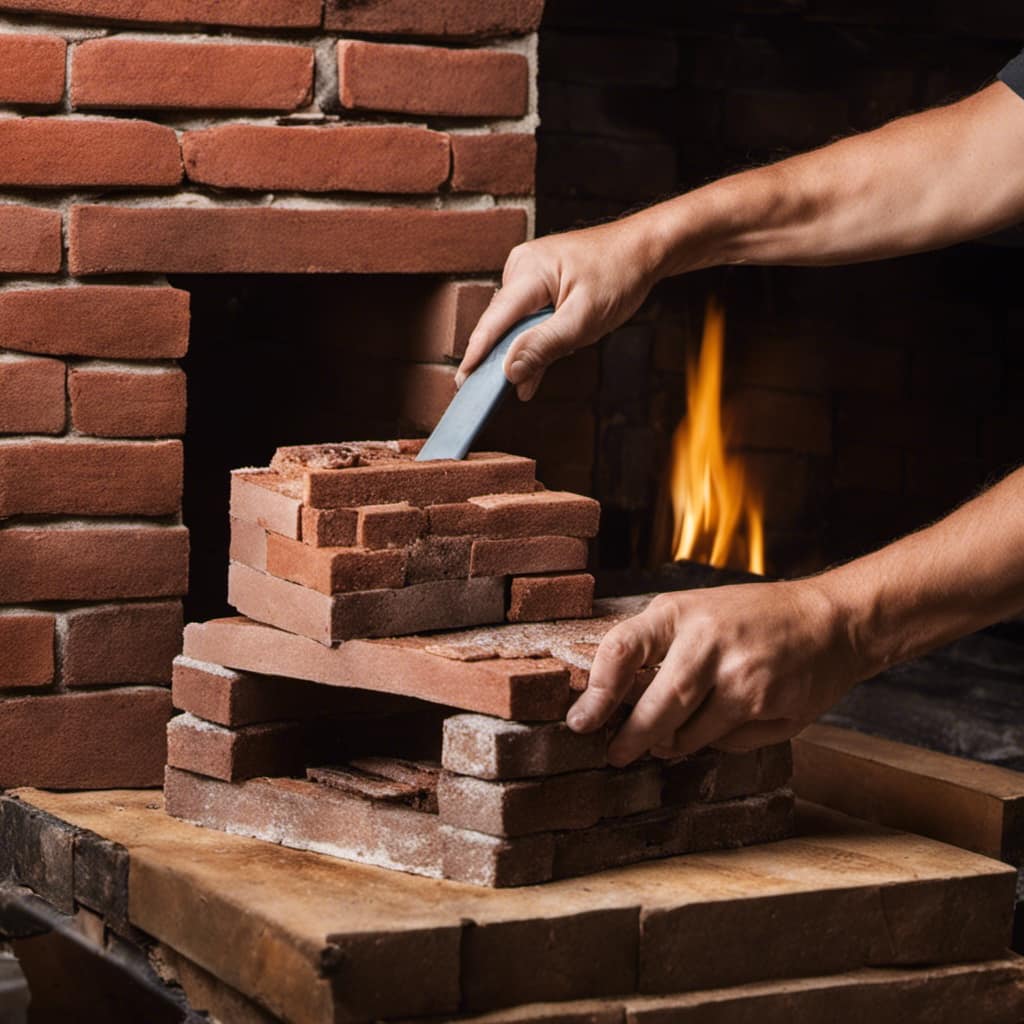
Measuring the fireplace dimensions: Accurate measurements are crucial for selecting the right size wood stove and ensuring a proper fit. I’ll measure the width, height, and depth of the fireplace opening, as well as the width of the chimney flue. This information will help me choose a wood stove that fits perfectly and allows for proper ventilation.
Checking for any structural issues: It’s important to inspect the fireplace and chimney for any signs of damage or structural issues. This includes cracks, loose bricks, or deteriorating mortar. Addressing these issues before installing the wood stove will help prevent any further damage and ensure a safe installation.
Installing the Chimney and Venting System
To properly vent the wood stove, I’ll need to install the chimney and venting system.
When it comes to chimney installation, there are a few important tips to keep in mind. First, ensure that the chimney is the correct size for your wood stove. It should be able to handle the volume of smoke and gases produced.

Additionally, make sure the chimney is installed at the correct height above the roofline to prevent downdrafts.
As for venting options, there are two main types: through-the-wall and through-the-roof. Through-the-wall venting is a popular choice for wood stoves as it allows for easy installation and maintenance.
However, through-the-roof venting is generally the go-to option as it provides better draft and reduces the risk of leaks.
Always consult with a professional when installing the chimney and venting system to ensure safety and efficiency.
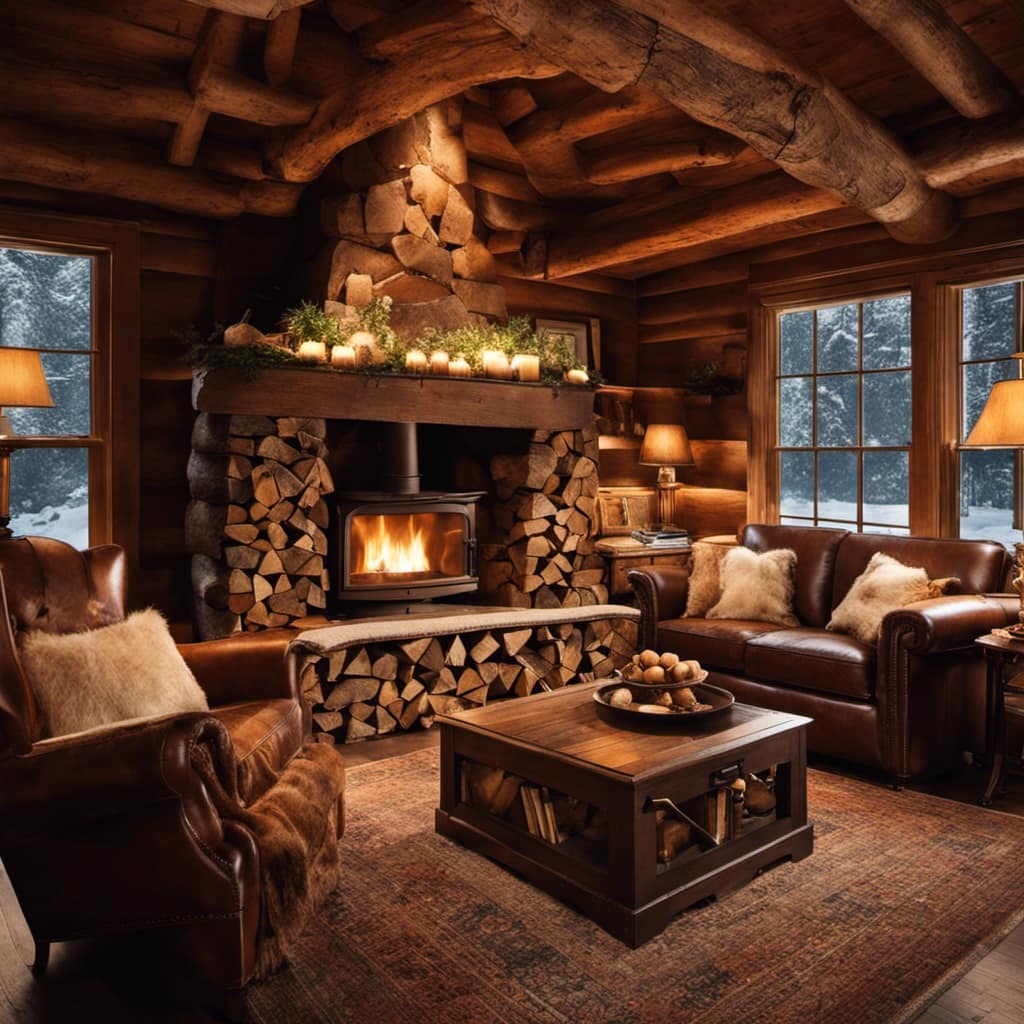
Connecting and Securing the Wood Stove in Your Fireplace
Connecting and securing the wood stove in my fireplace requires careful attention to ensure a safe and stable installation. Here are three important things to consider:
Fireproofing materials: It’s essential to use fireproof materials when connecting the wood stove to the fireplace. This includes fireproof gaskets and insulation to prevent heat from escaping and causing damage to the surrounding area.
Proper ventilation: Adequate ventilation is crucial for the safe operation of a wood stove. This can be achieved by installing a chimney or flue system that allows for the proper flow of smoke and gases out of the house. It’s important to follow local building codes and regulations when designing and installing the ventilation system.
Secure connections: To prevent any accidents or leaks, it’s important to ensure that all connections between the wood stove and the fireplace are secure. This includes properly sealing and fastening the stovepipe to the flue collar and using appropriate connectors and adapters.
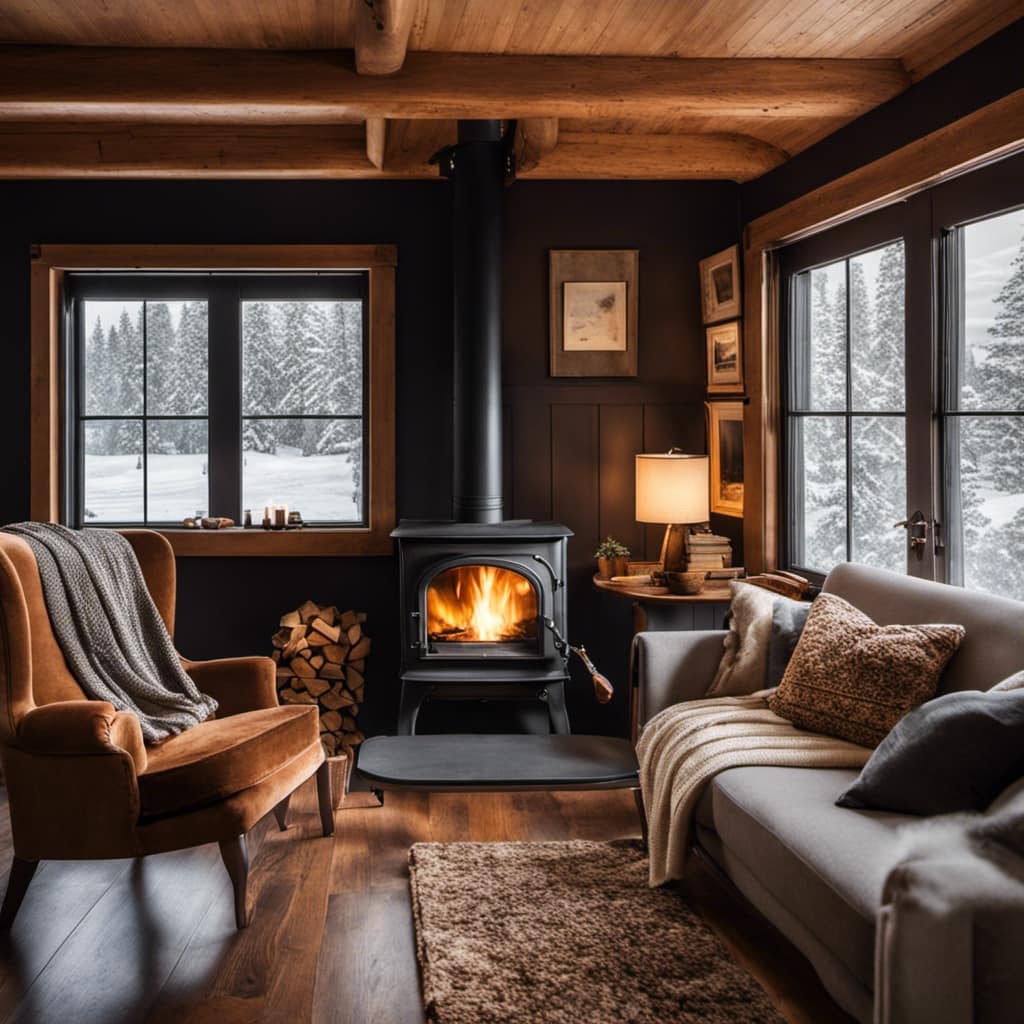
Is the Process of Installing a Wood Stove in a Fireplace the Same as Installing a Wood Stove?
Yes, the process of installing a wood stove in a fireplace is the same as installing a wood stove. Both require careful measurements, proper venting, and adherence to building codes. It’s essential to consult with a professional to ensure a safe and effective install wood stove fireplace.
Testing and Maintaining Your Wood Stove for Safe Operation
I regularly test and maintain my wood stove to ensure it operates safely and efficiently. Troubleshooting common wood stove issues is an important part of this process.
One common issue is a lack of heat production. If your wood stove isn’t producing enough heat, it could be due to a problem with the fuel, such as wet or unseasoned wood.
Another issue could be a blocked chimney, which can prevent proper airflow and reduce heat output. Cleaning and maintaining the chimney is crucial for the safe operation of your wood stove. Regularly removing creosote buildup and checking for any obstructions will help prevent chimney fires and ensure efficient burning.
Additionally, inspecting and cleaning the stove’s components, such as the firebox and flue pipe, will help maintain its performance and extend its lifespan.

Frequently Asked Questions
What Are the Different Types of Wood Stoves Available for Installation in a Fireplace?
There are various wood stove designs to choose from when installing in a fireplace. Each type has its own pros and cons. It’s important to consider factors such as efficiency, size, and aesthetic appeal.
Are There Any Specific Building Codes or Regulations That Need to Be Followed While Installing a Wood Stove in a Fireplace?
When installing a wood stove in a fireplace, it is important to adhere to building code requirements and safety regulations. These guidelines ensure that the installation is done correctly and safely.
Can a Wood Stove Be Installed in a Fireplace That Already Has a Gas or Electric Insert?
Yes, a wood stove can be installed in a fireplace with a gas or electric insert. However, it is important to consult with a professional to ensure proper installation and compliance with building codes. Additionally, a wood stove can be used as a primary heat source in a home.
How Often Should the Chimney and Venting System Be Inspected and Cleaned After Installing a Wood Stove?
After installing a wood stove, it is important to prioritize chimney maintenance. Regular inspection and cleaning are necessary to ensure the safe and efficient operation of the stove. Additionally, proper firewood storage is crucial to prevent moisture and maintain optimal burning conditions.
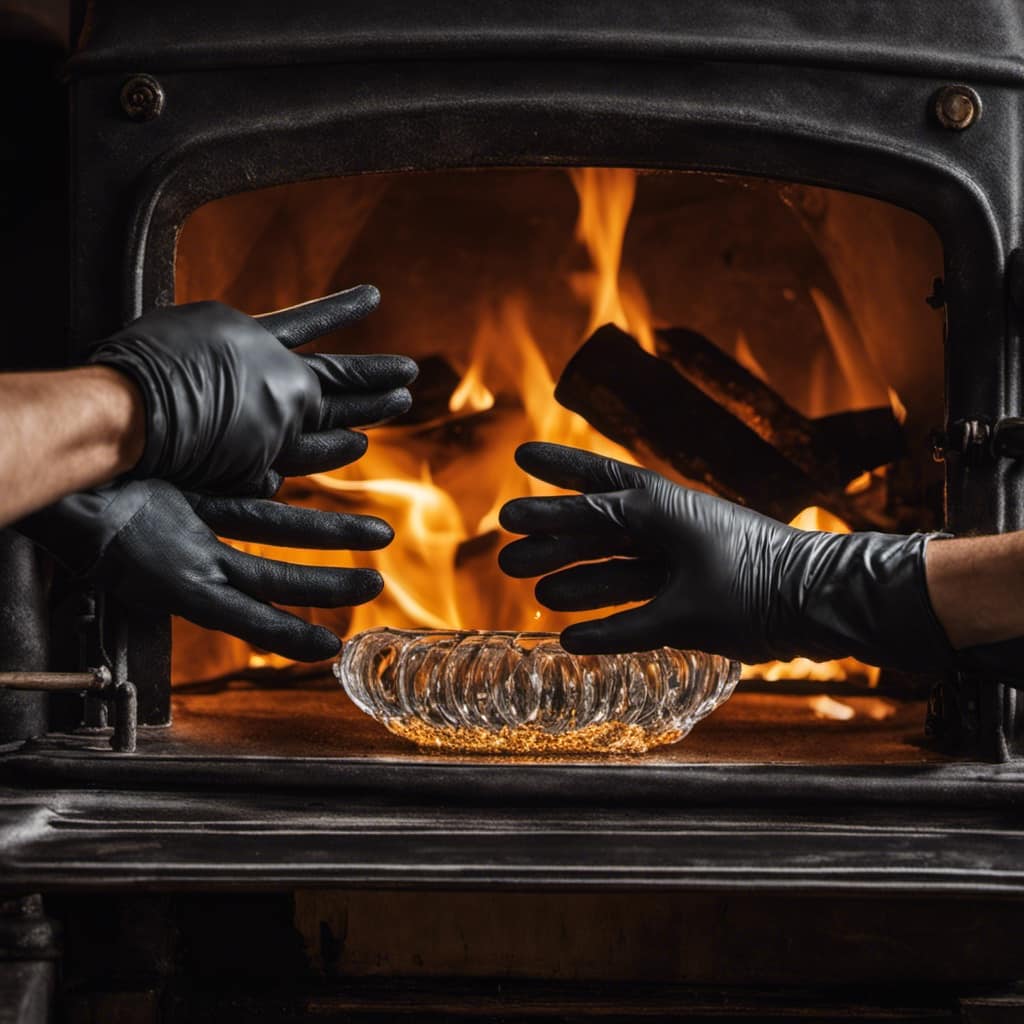
Are There Any Additional Safety Precautions or Accessories That Should Be Considered When Using a Wood Stove in a Fireplace?
Additional safety precautions and necessary accessories for using a wood stove in a fireplace include installing a fireproof hearth pad, using a stovepipe thermometer to monitor temperatures, and ensuring proper ventilation with a chimney cap and damper.
Conclusion
In conclusion, installing a wood stove in your fireplace can be a great way to add warmth and ambiance to your home.
According to a study by the Hearth, Patio, and Barbecue Association, wood stoves can be up to 30% more efficient than traditional fireplaces.
By following the proper steps and taking the necessary precautions, you can enjoy the benefits of a wood stove while ensuring safe and efficient operation in your home.

Growing up surrounded by the vast beauty of nature, Sierra was always drawn to the call of the wild. While others sought the comfort of the familiar, she ventured out, embracing the unpredictable and finding stories in the heartbeat of nature.
At the epicenter of every remarkable venture lies a dynamic team—a fusion of diverse talents, visions, and passions. The essence of Best Small Wood Stoves is crafted and refined by such a trio: Sierra, Logan, and Terra. Their collective expertise has transformed the platform into a leading authority on small wood stoves, radiating warmth and knowledge in equal measure.






